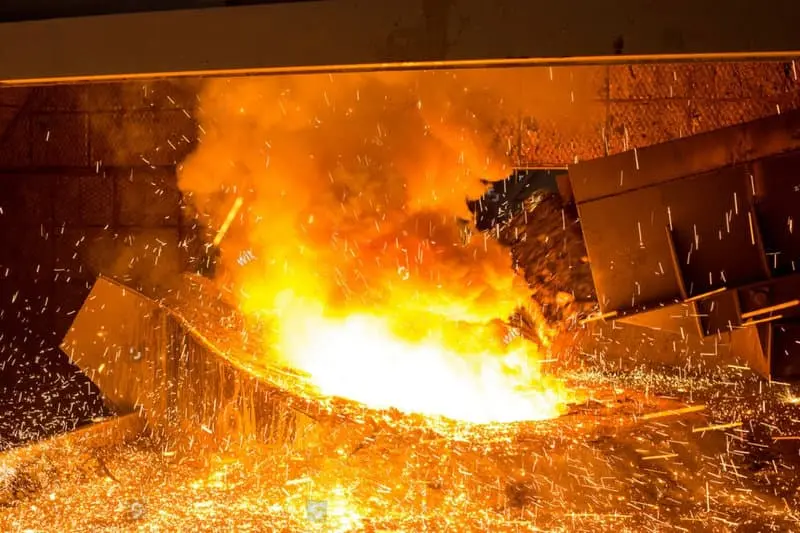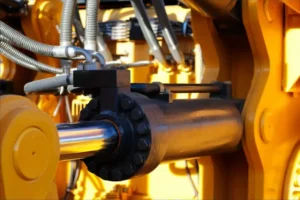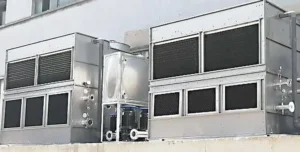ধাতু প্রক্রিয়াকরণ ক্ষেত্রে, অ্যালুমিনিয়াম তার দুর্দান্ত বৈদ্যুতিক পরিবাহিতা কারণে ব্যাপকভাবে ব্যবহৃত হয়, তাপ পরিবাহিতা, এবং প্লাস্টিকতা. অ্যালুমিনিয়াম গলানো অ্যালুমিনিয়াম প্রসেসিং চেইনের একটি গুরুত্বপূর্ণ পদক্ষেপ, এবং গলানোর দক্ষতা নিশ্চিত করার জন্য সঠিক চুল্লি নির্বাচন করা অপরিহার্য, পণ্যের গুণমান, এবং পরিবেশগত সুরক্ষা. এই নিবন্ধটি সাধারণত অ্যালুমিনিয়াম গলানোর জন্য ব্যবহৃত চুল্লিগুলির ধরণগুলি এবং পাঠকদের অবহিত সিদ্ধান্ত নিতে সহায়তা করার জন্য তাদের বৈশিষ্ট্যগুলি অনুসন্ধান করে.
1. বৈদ্যুতিক চুল্লি
অ্যালুমিনিয়াম গলানোর জন্য বৈদ্যুতিক চুল্লিগুলি সবচেয়ে সাধারণ সরঞ্জামগুলির মধ্যে রয়েছে, সুনির্দিষ্ট তাপমাত্রা নিয়ন্ত্রণ এবং একটি পরিষ্কার গলে যাওয়া প্রক্রিয়া অফার. এগুলি মূলত দুটি প্রকারে শ্রেণিবদ্ধ করা হয়: আনয়ন চুল্লি এবং প্রতিরোধের চুল্লি.
ইন্ডাকশন ফার্নেস: এই চুল্লিটি অ্যালুমিনিয়াম ইনগোটের মধ্যে এডি স্রোত তৈরি করতে বৈদ্যুতিন চৌম্বকীয় আনয়ন ব্যবহার করে, দ্রুত এবং অভিন্ন গরম সক্ষম করা. আনয়ন চুল্লিগুলি অত্যন্ত দক্ষ, সুনির্দিষ্ট তাপমাত্রা নিয়ন্ত্রণ এবং উচ্চ শক্তি ব্যবহার সরবরাহ করা, বড় অ্যালুমিনিয়াম প্রসেসিং সংস্থাগুলির জন্য তাদের পছন্দসই পছন্দ হিসাবে তৈরি করা.
প্রতিরোধের চুল্লি: এই ধরণের, অ্যালুমিনিয়াম প্রতিরোধের উপাদানগুলির মধ্য দিয়ে বর্তমান পাস দ্বারা উত্তপ্ত হয়. যদিও উত্তাপের গতি তুলনামূলকভাবে ধীর হয়, প্রতিরোধের চুল্লিগুলি একটি সাধারণ কাঠামো বৈশিষ্ট্যযুক্ত, সহজ রক্ষণাবেক্ষণ, এবং কম খরচ, এগুলি ছোট থেকে মাঝারি আকারের অ্যালুমিনিয়াম গলানো ক্রিয়াকলাপের জন্য উপযুক্ত করে তোলা.
2. গ্যাস চুল্লি
গ্যাস চুল্লিগুলি দহন-উত্পাদিত উচ্চ তাপমাত্রার মাধ্যমে অ্যালুমিনিয়াম গলে যাওয়ার জন্য প্রাকৃতিক গ্যাস এবং প্রোপেনের মতো দহনযোগ্য গ্যাসগুলি ব্যবহার করে. তারা দ্রুত হিটিং এবং উচ্চ তাপীয় দক্ষতা সরবরাহ করে, উল্লেখযোগ্য তাপ শক্তি প্রয়োজন এমন পরিস্থিতিতে তাদের আদর্শ করে তোলা, বিশেষত যখন বিদ্যুৎ সরবরাহ সীমাবদ্ধ থাকে. যাহোক, গ্যাস চুল্লিগুলি উচ্চতর নির্গমন উত্পাদন করে এবং পরিবেশ সুরক্ষা প্রয়োজনীয়তাগুলি পূরণের জন্য অবশ্যই বিস্তৃত বায়ুচলাচল সিস্টেম এবং এক্সস্টাস্ট গ্যাস চিকিত্সা ডিভাইসগুলিতে সজ্জিত থাকতে হবে.
3. তেল চুল্লি
গ্যাস চুল্লিগুলির অনুরূপ, জ্বালানী জ্বলন থেকে উত্পন্ন উচ্চ তাপমাত্রা ব্যবহার করে তেল চুল্লিগুলি অ্যালুমিনিয়াম গলে, সাধারণত ডিজেলের মতো তরল জ্বালানী নিয়োগ করা. তেল চুল্লিগুলিতে এখনও নির্দিষ্ট অ্যাপ্লিকেশন রয়েছে (যেমন, অপর্যাপ্ত বিদ্যুৎযুক্ত অঞ্চলে), ক্রমবর্ধমান কঠোর পরিবেশগত বিধিমালার কারণে এবং ক্লিনার শক্তি উত্সগুলির জন্য চাপের কারণে ধীরে ধীরে তাদের ব্যবহার হ্রাস পাচ্ছে.
4. নির্বাচন গাইড
অ্যালুমিনিয়াম গলানোর জন্য কোনও চুল্লি বেছে নেওয়ার সময়, নিম্নলিখিত বিষয়গুলি বিবেচনা করুন.
- উত্পাদন স্কেল: বার্ষিক আউটপুট এবং দৈনিক গলানোর ভলিউমের উপর ভিত্তি করে উপযুক্ত চুল্লির ধরণ এবং ক্ষমতা নির্ধারণ করুন. বড় অ্যালুমিনিয়াম প্রসেসিং উদ্যোগগুলি দক্ষ অগ্রাধিকার দেওয়া উচিত, ইন্ডাকশন চুল্লিগুলির মতো শক্তি-সঞ্চয় বিকল্প.
- শক্তি সরবরাহ: স্থানীয় শক্তির প্রাপ্যতা এবং ব্যয়ের উপর ভিত্তি করে সর্বাধিক উপযুক্ত চুল্লি প্রকারটি নির্বাচন করুন. নির্ভরযোগ্য বিদ্যুৎ এবং যুক্তিসঙ্গত হার সহ অঞ্চলগুলি বৈদ্যুতিক চুল্লিগুলির পক্ষে হতে পারে, প্রাকৃতিক গ্যাস সমৃদ্ধ অঞ্চল বা বিদ্যুতের সীমাবদ্ধতার মুখোমুখি অঞ্চলগুলি গ্যাস বা তেল চুল্লিগুলির জন্য বেছে নিতে পারে.
- পরিবেশগত সুরক্ষা প্রয়োজনীয়তা: পরিবেশগত নিয়মকানুনের সাথে, উদ্যোগগুলি নির্গমন এবং পরিবেশগত কর্মক্ষমতা বিবেচনা করা জরুরী. স্বল্প-নির্গমন এবং সহজে পরিচালিত চুল্লিগুলি পরিবেশগত ঝুঁকি হ্রাস করতে এবং অপারেটিং ব্যয় হ্রাস করতে সহায়তা করতে পারে.
- ব্যয়-কার্যকারিতা: ক্রয়ের মতো কারণগুলি মূল্যায়ন করুন, অপারেটিং, এবং সর্বাধিক ব্যয়বহুল চুল্লি প্রকার চয়ন করতে রক্ষণাবেক্ষণ ব্যয়.
সংক্ষেপে, অ্যালুমিনিয়াম গলানোর জন্য সঠিক চুল্লি নির্বাচন করা অত্যন্ত গুরুত্বপূর্ণ. বিভিন্ন চুল্লিগুলির বৈশিষ্ট্য এবং অ্যাপ্লিকেশনগুলি পুঙ্খানুপুঙ্খভাবে বোঝার মাধ্যমে এবং আপনার ক্রিয়াকলাপের নির্দিষ্ট প্রয়োজনীয়তা সাবধানতার সাথে বিবেচনা করে, আপনি একটি দক্ষ নিশ্চিত করতে পারেন, স্থিতিশীল, এবং পরিবেশ বান্ধব গলনা প্রক্রিয়া.








